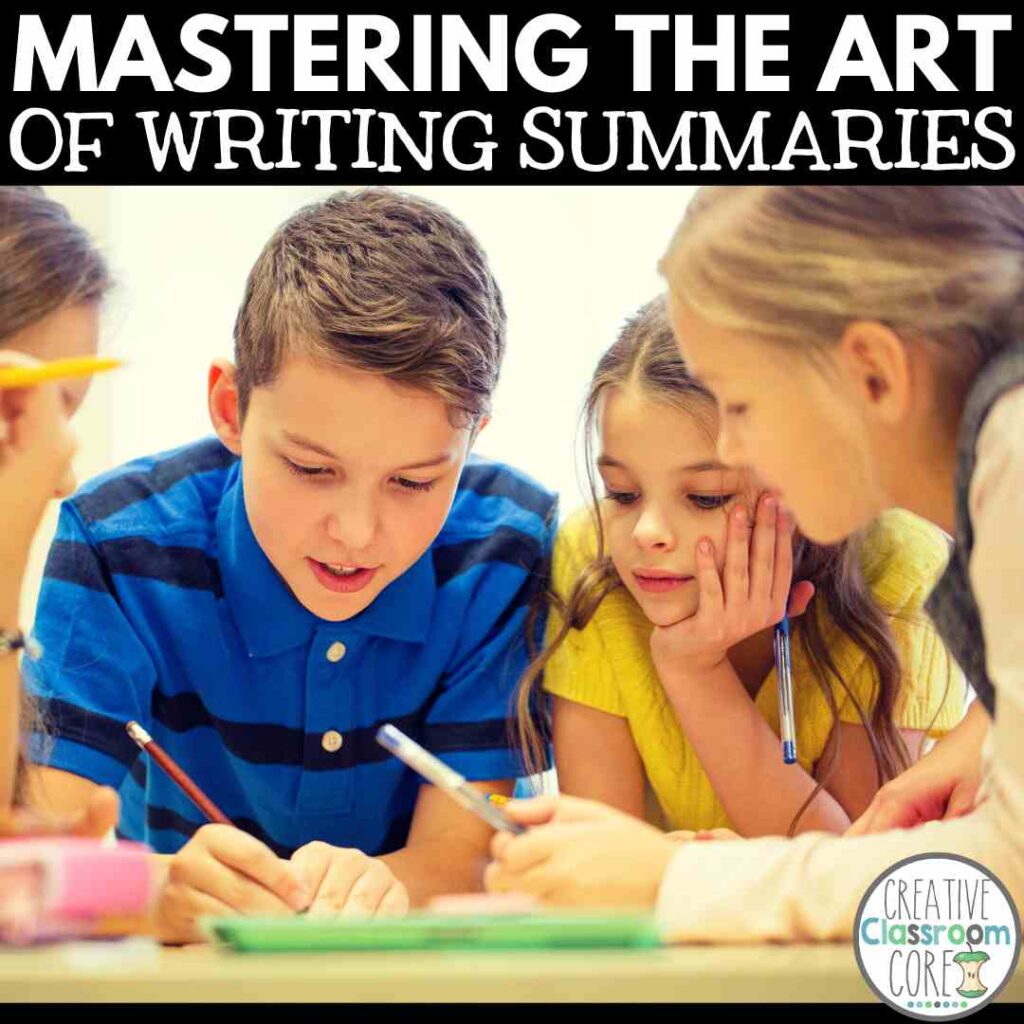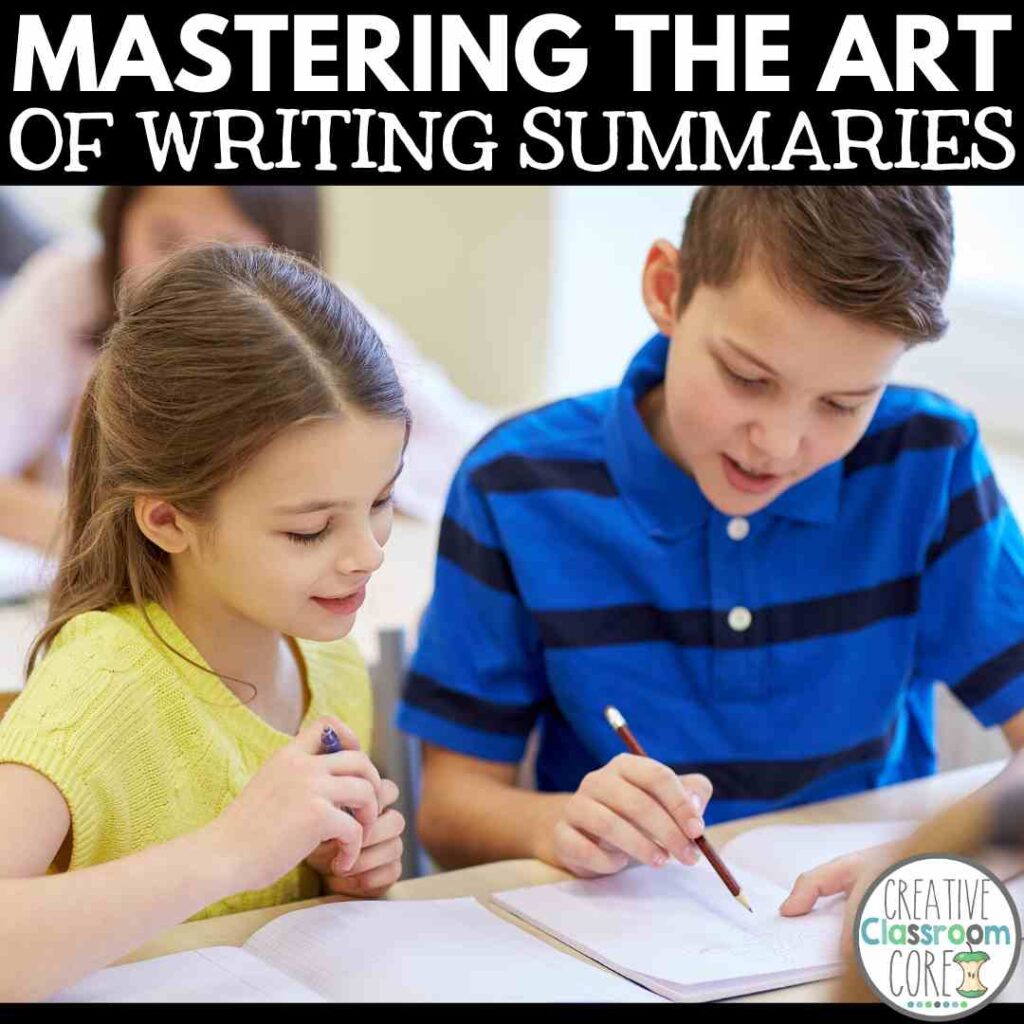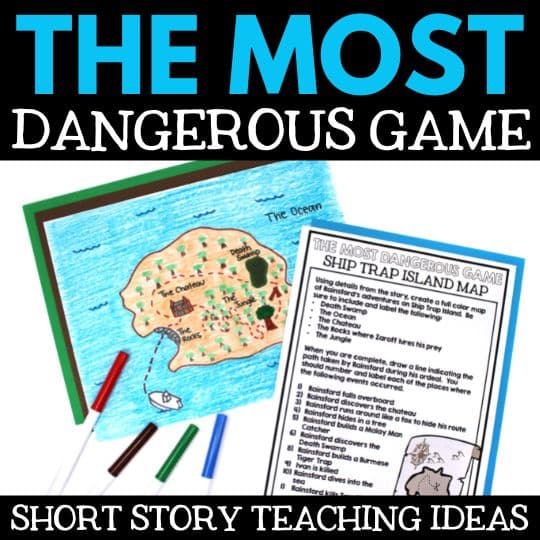GUIDE TO Writing Summaries
By MARISSA DESPINS Updated April 29, 2024
Writing summaries is an essential skill that benefits learners across all subjects and grades. Summarizing helps students express key information, enhance their comprehension, and improve their ability to communicate in ways that are clear and effective. Whether they’re summarizing a chapter, an article, or an entire book, mastering this skill can transform students into more effective communicators and critical thinkers. In this post we will explore what summaries are, why they’re vital for academic success, and how you can teach this crucial skill in your classroom.
Looking for some no-prep writing resources that you can print and use right away in your classroom? Click on the image or button below to see all of the writing resources available in my TPT shop!
Definition
A summary is a concise explanation of the main ideas and key details of a text. It’s significantly shorter than the original text and excludes the reader’s opinions and unnecessary details. The goal of a summary is to provide a clear and accurate representation of the material, highlighting the core points without personal interpretation or extra information.
Summary Vs. Thesis Statement
When engaging in academic writing, it’s essential for students to be able to tell the difference between a summary and a thesis statement. Both are important components of structured writing.
A summary provides a short overview of a text’s main points. It presents the essential content without personal commentary or extensive detail. The goal of a summary is to be both neutral and brief.
In contrast, a thesis statement is the foundational element of your essay or paper. It states your position on a topic and outlines the primary arguments you will discuss to prove your point.
Teaching students the difference between a thesis statement and a summary will not only sharpen their writing skills but will also ensure the arguments they make can be followed effectively.
Why is it Important to Teach Students the Art of Writing summaries?
Writing summaries is an important skill for students to practice. Check out some key benefits below.
- Enhances Comprehension: Summarizing forces students to identify the main ideas and supporting details, which deepens their understanding of the text.
- Boosts Retention: The process of summarizing helps students remember what they read by reinforcing the material’s key concepts.
- Improves Organizational Skills: Students learn to organize information logically, which is a transferable skill across various academic disciplines.
- Encourages Critical Thinking: Summarizing requires students to differentiate between crucial content and minor details, fostering critical analysis skills.

A Step-By-Step Guide
Follow these steps and your students will be writing summaries like pros!
Step 1: Understand the Text
- Before students can summarize, they need to fully understand the content. Encourage active reading strategies such as annotating, note-taking, and discussing to clarify any confusion about the text.
Step 2: Identify the Main Idea
- Teach students to pinpoint the main idea of the text. This often involves looking for the thesis statement in academic writing or the central theme in narratives. Have students practice by writing the main idea in one sentence.
Step 3: Find Key Supporting Details
- Once the main idea is established, students should identify the important details that support or explain it. These details are crucial for developing a robust summary but should be carefully selected to avoid including too much information.
Step 4: Organize the Summary
- Guide students in structuring their summaries. They should start with a sentence that states the main idea, followed by key details. Encourage them to use their own words to avoid plagiarism and to ensure they truly understand the source material.
Step 5: Write the Summary
- With a clear structure in place, students can begin writing their summaries. Remind them to keep it brief and to the point, focusing only on the original text’s essential elements.
Step 6: Revise and Edit
- Have students review their summaries for clarity and conciseness. They should check that their summary makes sense as a standalone text and accurately reflects the original source’s content. Encourage students to share their writing with a partner to help refine and improve their summaries.
Wrapping things up
Teaching students to write summaries is not just about getting them to reduce texts to their essentials; it’s about fostering a range of academic skills that will serve them throughout their educational journeys and beyond. By taking the time to teach summarizing effectively, you are equipping your students with tools to succeed in understanding complex materials, improving their memory, and organizing their thoughts coherently.
Looking for more writing activities to use with your learners?
Check out these posts!
Descriptive Writing Activities for Middle School
Interested in signing up for my email list?
If you are interested in signing up for my email list, you can do so by clicking on the link below. I periodically send out emails with free resources, teaching tips, and exclusive deals. Signing up will also give you immediate access to some of my best selling Interactive Notebook resources – foldable activities, graphic organizers, and other fun activities.







